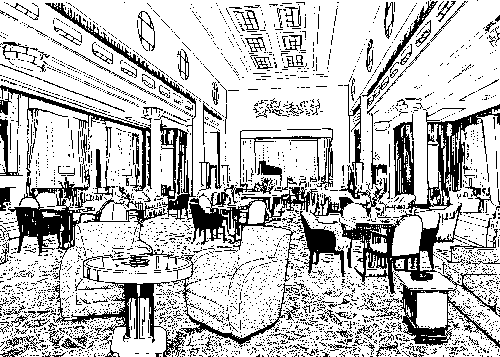 |
FAMOUS SHIPS |
 |
FAMOUS SHIPS |
THE "QUEEN MARY "
The QUEEN MARY was originally conceived due to the fact that the British were being outclassed in the mid 1920s by the American, French, Italian and German shipping lines on the North Atlantic route. In 1926 the Cunard Line decided to try and regain some of their lost business along with the pride of having the best ship. The Mauretania, built in 1907 held the prestigious Blue Riband award for the fastest passage of the Atlantic until 1929! The German liner Bremen, brand new in 1929, took it away.
The planning and testing for the new ship took over three years. Then more problems took place since a new, large drydock to build the ship. With these problems finally resolved, a contract was signed with John Brown and Co. Ltd. on I December 1930. Disaster again struck when the depression hit and all work stopped on hull # 534 on December II, 1931. The government of Britain refused to help at first, and a real stalemate took place. The British finally agreed to help fund the completion of the ship under the condition that Cunard merge with the White Star Line, which was in poor financial condition. This was reluctantly agreed too, and upon completion of the merger of the two lines, the government approved the necessary funding and work began again, on 3 April 1934. The ship was completed and launched on Wednesday, 26 September 1934. King George V, Queen Mary and The Prince of Wales officiated at the Queen's Salon launching ceremony, Queen Mary performing the act of sending hull # 534 on its way to the sea, resulting in this being the first reigning monarch to name a merchant vessel. This is the main reason hull # 534 was named Queen Mmy.
Her dimensions are: overall
length, 1019 feet 6 inches; Beam, 118 feet; Draught, 38 feet 10 inches;
Displacement, 81,237 gross tons; Speed, 28.5 knots. As built in 1936 she had the
following complement: Cabin class, 776; Tourist class, 784; Third class, 579;
officers and crew, 1101. She regained the Blue Riband in August 1938, achieving
an average speed of 31.69 knots in a distance of 2938 nautical miles in 3 days
20 hours and 42 minutes (no, they did not time it to the second).
Photo Courtesy of the "Anatomy of the Ship Series - Queen Mary"
She maintained regular North Atlantic crossing through March 1940, when she was requisitioned for WWII. Some wartime highlights included a collision with HMS Curacoa in October of 1941 (HMS Curocoa sank), taking Sir Winston Churchill to the Quebec conference in 1943 and again conveying Sir Winston Churchill to H6fkx, Nova Scotia in September 1944. In September of 1946 she was returned to Southhampton to be changed back into postwar service. She sailed her first commercial trip after the' war on July 1947. On July 1952 she lost the coveted Blue Riband to the United States. On 22 September, 1967 she left New York for the last time, arriving in Southhampton on the 27h of September. She sailed for Long Beach, California on 31 October 1967, arriving there for her final resting-place on 9 December, 1967.
The Queen Mary was designed with 12 decks. She catered to three classes of passengers, the highest paying being the Cabin class, followed by Tourist and Third class. Cabin class passengers enjoyed cabin class principal rooms, lounge and smoking rooms situated on the promenade deck. The cabin class lounge had a height of over 30 feet. Each class of passenger service had their own lounge, eating area and smoking room. Much more information can be obtained (including pictures and drawings) of the Queen Mary -from the Anatomy of the Ship series of books entitled The Cunard Liner Queen Mary by Ross Watton, Naval Institute Press, 1989, ISBN 0-87021599-X.
The Queen Mary is now permanently docked at her berth in Long Beach and is one of the outstanding attractions in Long Beach. She is run as a hotel with a number of restaurants on board and a small village off her port side.